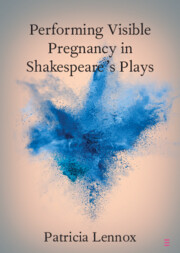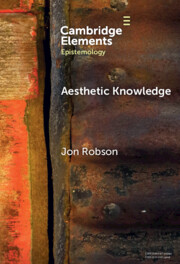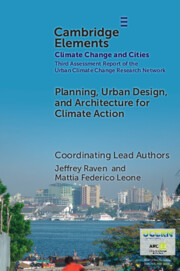Refine listing
Actions for selected content:
2251 results in Cambridge Elements

Lauren Gunderson and Feminist Theatre in the Twenty-First Century
-
- Published online:
- 17 November 2025
- Print publication:
- 11 December 2025
-
- Element
- Export citation

Monotheism and Creation
-
- Published online:
- 17 November 2025
- Print publication:
- 11 December 2025
-
- Element
- Export citation

Early Twentieth Century New Black Religious Movements in the United States
-
- Published online:
- 17 November 2025
- Print publication:
- 11 December 2025
-
- Element
- Export citation

China for Africa's Industrialization?
-
- Published online:
- 15 November 2025
- Print publication:
- 04 December 2025
-
- Element
-
- You have access
- Open access
- HTML
- Export citation

Science Denial
- Post-Truth or Post-Trust?
-
- Published online:
- 14 November 2025
- Print publication:
- 20 November 2025
-
- Element
- Export citation

Abuse in New Religious Movements
-
- Published online:
- 14 November 2025
- Print publication:
- 11 December 2025
-
- Element
-
- You have access
- Open access
- HTML
- Export citation

Leo XIII and the Rise of Neo-Thomism
-
- Published online:
- 13 November 2025
- Print publication:
- 04 December 2025
-
- Element
- Export citation

Discourse and Queer Sinophone Male Identities
- A Western Immigrant Perspective
-
- Published online:
- 12 November 2025
- Print publication:
- 11 December 2025
-
- Element
- Export citation

Performing Visible Pregnancy in Shakespeare's Plays
-
- Published online:
- 11 November 2025
- Print publication:
- 04 December 2025
-
- Element
- Export citation

Beckett and Leopardi
-
- Published online:
- 11 November 2025
- Print publication:
- 11 December 2025
-
- Element
- Export citation

Wrongful Discrimination
-
- Published online:
- 11 November 2025
- Print publication:
- 22 January 2026
-
- Element
- Export citation

Race, Genetics, History
- New Practices, New Approaches
-
- Published online:
- 11 November 2025
- Print publication:
- 11 December 2025
-
- Element
- Export citation

Aesthetic Knowledge
-
- Published online:
- 11 November 2025
- Print publication:
- 04 December 2025
-
- Element
- Export citation

Stress in Childhood
-
- Published online:
- 06 November 2025
- Print publication:
- 04 December 2025
-
- Element
- Export citation

Planning, Urban Design, and Architecture for Climate Action
-
- Published online:
- 05 November 2025
- Print publication:
- 11 December 2025
-
- Element
-
- You have access
- Open access
- HTML
- Export citation

Indigenous Rights to Land Versus Extractivism
- The Promise and Limits of ILO Convention No. 169 in Mexico
-
- Published online:
- 04 November 2025
- Print publication:
- 04 December 2025
-
- Element
- Export citation

Cognition and Conspiracy Theories
-
- Published online:
- 03 November 2025
- Print publication:
- 04 December 2025
-
- Element
- Export citation

Money, Partisanship and Power in Local Politics
-
- Published online:
- 03 November 2025
- Print publication:
- 04 December 2025
-
- Element
- Export citation

Harriet Jacobs
-
- Published online:
- 31 October 2025
- Print publication:
- 20 November 2025
-
- Element
- Export citation

Biology and Medical Theory
-
- Published online:
- 31 October 2025
- Print publication:
- 04 December 2025
-
- Element
- Export citation
